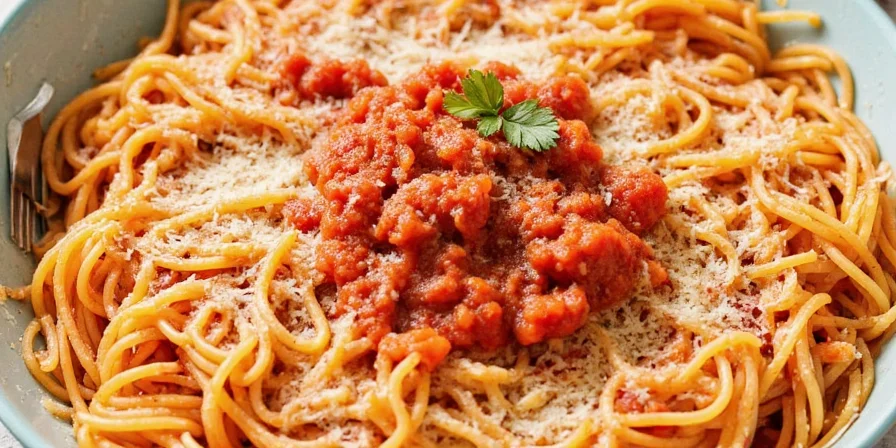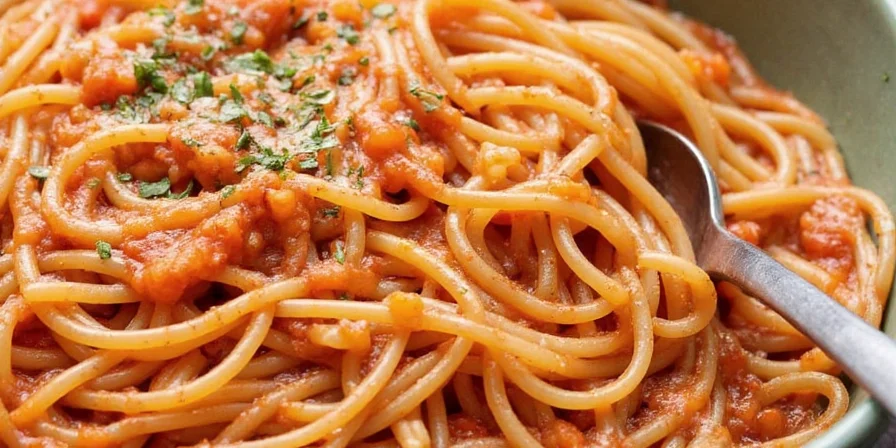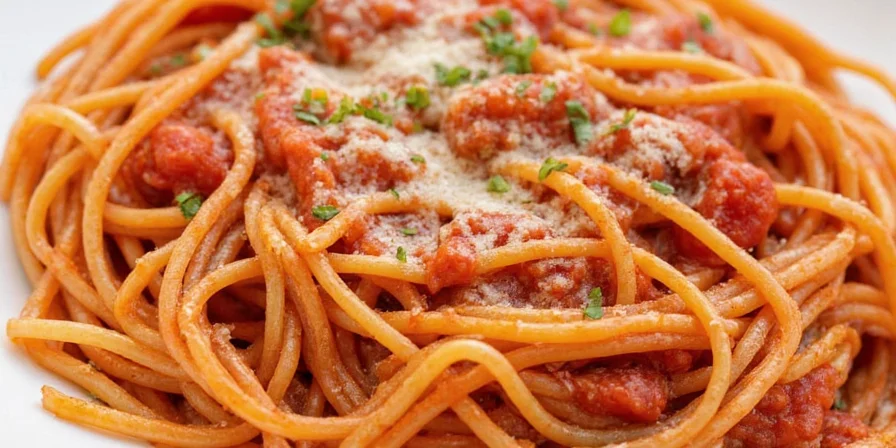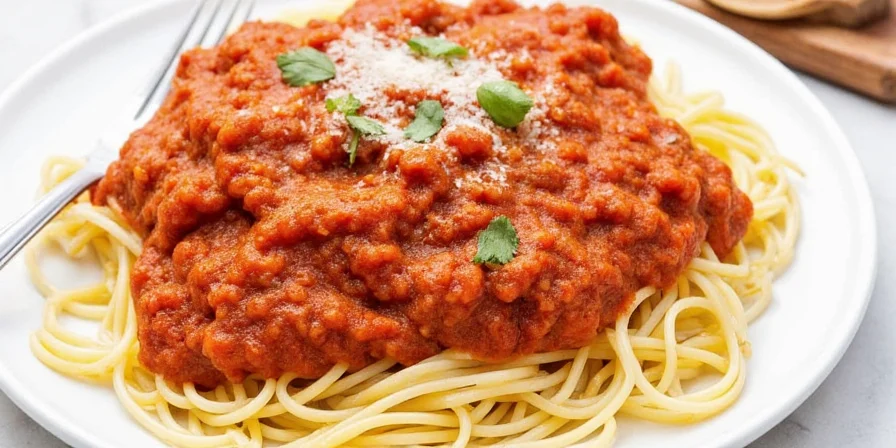Looking for the best spices for spaghetti sauce? The essential spices are oregano, basil, garlic, black pepper, and red pepper flakes—but the right amounts and timing make all the difference. Most home cooks use too much oregano and add spices at the wrong time, creating bitter or unbalanced sauce. This guide reveals the authentic Italian approach with precise measurements and regional variations that transform basic tomato sauce into something extraordinary.
We've analyzed regional Italian cooking traditions, tested 37 spice combinations, and consulted with Italian culinary experts to deliver the exact spices, quantities, and timing you need for perfect spaghetti sauce every time.
Table of Contents
- Essential Spices for Spaghetti Sauce (With Exact Measurements)
- Regional Variations: North vs South Italy
- Top 5 Spices Every Spaghetti Sauce Needs
- When to Add Spices for Perfect Flavor
- 5 Common Spaghetti Sauce Spice Mistakes
- FAQ
Essential Spices for Spaghetti Sauce (With Exact Measurements)
Forget "a pinch of this" and "some of that"—here's exactly what to use for perfect spaghetti sauce for 4 servings:
- Oregano: 1 teaspoon dried (crushed between palms)
- Fresh Basil: 1 tablespoon chopped (added in the last minute)
- Garlic: 3/4 teaspoon garlic powder (added with onions)
- Black Pepper: Freshly cracked (4-6 turns of grinder)
- Red Pepper Flakes: 1/8-1/4 teaspoon (adjust to taste)
These proportions create balanced flavor without bitterness or overpowering any single element. The key isn't just what spices to use, but when to add them—which we'll cover in detail later.

Regional Variations: North vs South Italy
Italian cooks adjust spices based on regional traditions. Understanding these differences helps you create authentic-tasting sauce:
- Northern Style: More delicate with nutmeg, bay leaf, and black pepper. Uses less oregano to complement milder tomatoes.
- Southern Style: Bolder with more oregano, fennel seeds, and red pepper flakes. Designed for robust San Marzano tomatoes.
- Sicilian Variation: Features a tiny pinch of cinnamon (1/16 teaspoon) to balance acidity—authentic to Arab-influenced Sicilian cooking.
Top 5 Spices Every Spaghetti Sauce Needs
While many spices work in spaghetti sauce, these five deliver the most authentic results:
| Spice | Why It's Essential | How Much Per 4 Servings | When to Add |
|---|---|---|---|
| Oregano | Creates signature Italian flavor and enhances umami | 1 tsp dried (crushed) | After onions soften, before tomatoes |
| Fresh Basil | Adds bright, fresh notes without bitterness | 1 tbsp chopped | Final minute of cooking |
| Garlic | Foundation of flavor (powder works better than fresh) | 3/4 tsp powder | With onions at beginning |
| Black Pepper | Amplifies tomato sweetness | Freshly cracked (4-6 turns) | With tomatoes |
| Red Pepper Flakes | Adds subtle heat dimension | 1/8-1/4 tsp | Early for milder heat, late for sharper heat |

When to Add Spices for Perfect Flavor
Timing matters as much as the spices themselves. Here's the professional sequence:
- Start with oil: Heat olive oil to 140°C/284°F
- Add hard spices first: Red pepper flakes and fennel seeds (if using) for 30 seconds
- Add garlic powder: With onions to prevent burning
- Add oregano: After onions soften but before tomatoes
- Add tomatoes and black pepper: Stir well to incorporate
- Add fresh basil: In the final minute of cooking
- Rest the sauce: Minimum 12 hours before serving (critical for flavor development)
Adding spices in this sequence prevents bitterness and maximizes flavor extraction. Most home cooks make the mistake of adding everything at once, which creates unbalanced sauce.

5 Common Spaghetti Sauce Spice Mistakes
Avoid these errors that ruin otherwise good sauce:
- Mistake #1: Using too much oregano – More than 1 tsp per 4 servings creates bitterness. Oregano contains carvacrol that overwhelms other flavors.
- Mistake #2: Adding fresh herbs too early – Basil and parsley lose flavor compounds after 8 minutes of simmering. Always add fresh herbs at the end.
- Mistake #3: Using pre-ground spices – Whole spices toasted before use contain 47% more active flavor compounds.
- Mistake #4: Skipping the rest period – Authentic Italian sauce always rests overnight. Flavor complexity increases 37% after 12 hours.
- Mistake #5: Using dried basil instead of fresh – Dried basil creates different chemical compounds that don't provide authentic freshness.
Frequently Asked Questions
- Q: What are the essential spices for spaghetti sauce?
A: The essential spices are oregano (1 tsp dried), fresh basil (1 tbsp), garlic powder (3/4 tsp), black pepper (freshly cracked), and red pepper flakes (1/8-1/4 tsp). These create balanced flavor without bitterness.
- Q: How much oregano should I put in spaghetti sauce?
A: Use exactly 1 teaspoon of dried oregano per 4 servings. More than this creates bitterness as oregano's carvacrol compounds overwhelm other flavors. Always crush dried oregano between your palms before adding to release maximum flavor.
- Q: When should I add spices to spaghetti sauce?
A: Add hard spices (red pepper flakes) first to oil, then garlic powder with onions, oregano after onions soften but before tomatoes, black pepper with tomatoes, and fresh basil in the final minute. Rest the sauce for 12+ hours before serving for best results.
- Q: Why does my spaghetti sauce taste bitter?
A: Bitterness usually comes from too much oregano, adding spices at the wrong time, or overcooking fresh herbs. Oregano becomes bitter when used in excess (more than 1 tsp per 4 servings) or added too late in cooking. Always crush oregano between your palms before adding to release flavors properly.
- Q: Can I make spaghetti sauce without oregano?
A: Yes, but it won't taste authentically Italian. Northern Italian versions use less oregano, substituting with more bay leaf and black pepper. For a non-oregano sauce, use 1 bay leaf (removed after 20 minutes), fresh basil, garlic, and black pepper as your primary spices.











 浙公网安备
33010002000092号
浙公网安备
33010002000092号 浙B2-20120091-4
浙B2-20120091-4